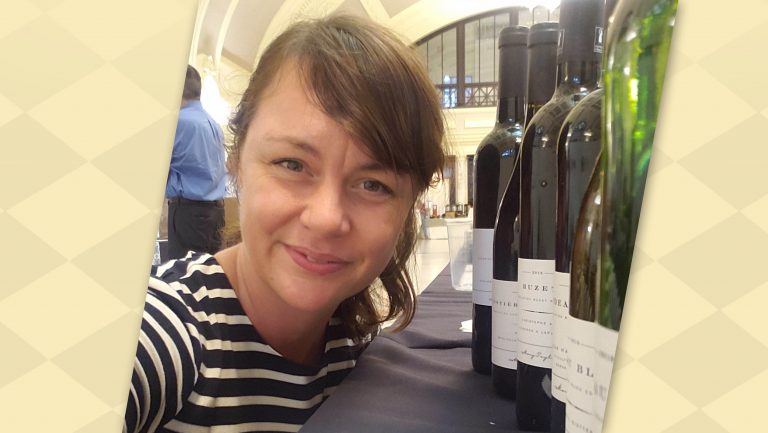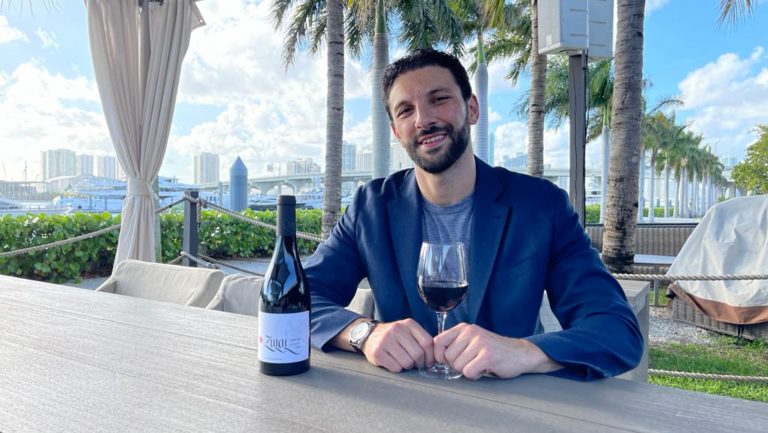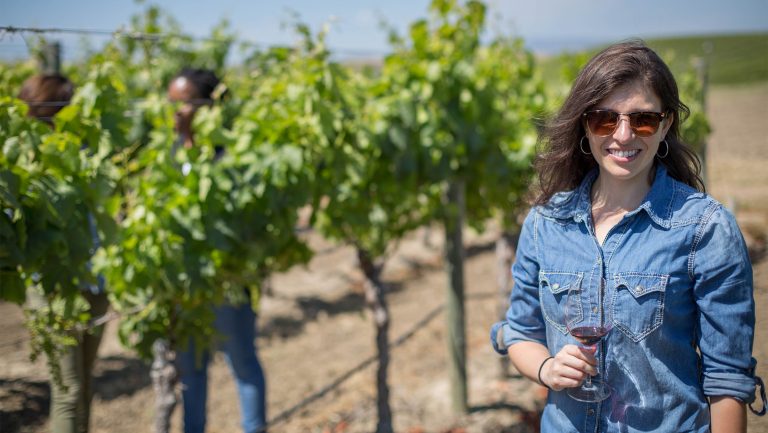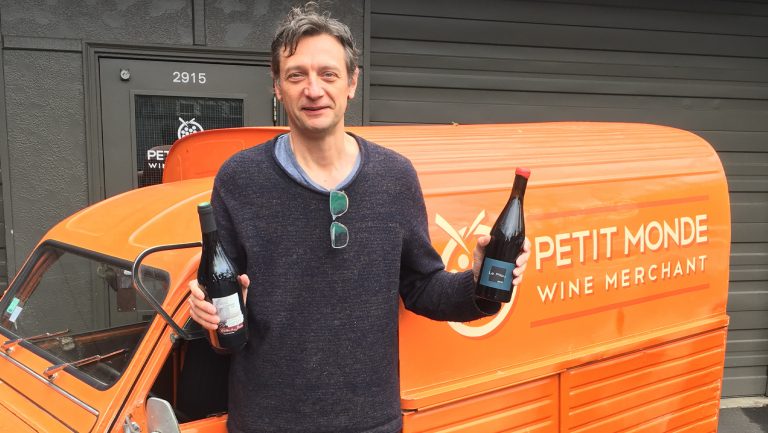In our Importer Intel series, we interview importers about how they broke into the business, built up their portfolios, and navigated challenges along the way.
On the shelf of any wine retail shop, Mary Taylor Wine bottles catch the eye not for being flashy, but for their clean, straightforward, white labels. Taylor’s design for her White Label series tells a simple story: the wine inside is an equally straightforward, authentic example of a classic European wine appellation.
While the concept is simple enough, this labeling style is still uncommon in the U.S., where Americans are accustomed to buying wine by grape variety, or for wild, artistic label designs that can stand out in an increasingly crowded retail market. But Taylor’s designs have come to stand out for different reasons. Her sub-$20 bottles offer simple, easy-to-understand packaging and reliably high-quality wine.

Don’t miss the latest drinks industry news and insights. Sign up for our award-winning newsletters and get insider intel, resources, and trends delivered to your inbox every week.
Taylor, set on demystifying the European appellation system for unfamiliar wine drinkers, had a clear vision for her brand when she set out to start Mary Taylor Wine—which she trademarked in 2013 and officially founded in 2017—but the road to success was anything but. “I am a born entrepreneur,” explains Taylor, “but I didn’t have any real, practical knowledge of how to start and run a company.” That, it turns out, didn’t deter her. “Everything has been a learning curve. I didn’t know what words like ‘equity’ meant, so I learned. Were I a little more sheltered, I likely wouldn’t have taken such risks, but here we are.”
As Taylor worked to make a living while gaining the knowledge necessary to start her own business, her career weaved in and out of the wine industry. She started out as a dishwasher and busboy before working in positions from cook and sommelier to bike messenger and portfolio manager.
In 2015, she decided to go to business school and got a job working at a bank, and by 2017, she finally felt ready to launch Mary Taylor Wine. “I had to leave the wine business to really launch my company,” says Taylor, “because former employers were not into the idea of me being autonomous. So I needed to find another job, which I did—and during which I learned about financial management.”
Now, with more than 20 years of industry experience and a business degree from NYU, Taylor’s business is flourishing, proving that her approach to wine sourcing and packaging is resonating with both buyers and consumers. Her portfolio, which spans both recognizable appellations like Bordeaux and Beaujolais as well as lesser-known areas like Buzet and Navarra, makes it easy to navigate Europe’s vast system of winegrowing regions. SevenFifty Daily spoke with Taylor about how she made the case for embracing the old-fashioned, European way of buying and selling wine according to appellation, turning her vision for Mary Taylor Wine into a reality.
SevenFifty Daily: What inspired you to start Mary Taylor Wine?
Mary Taylor: It is apparent that the system of varietal wine versus geographic designations is very confusing to people. I wanted to make geographically labeled wines more accessible by building trust in our highly recognizable label.
What does the structure of your business look like?
We are a Connecticut-based importer with a warehouse in New Haven. We also partner with Housatonic Wine Company, a Connecticut-based distribution company that also operates in Vermont and New Hampshire. We also have numerous distribution partners nationally, and we are exported in five countries, including the U.K.
Your wines highlight specific European appellations. How do you decide which regions to focus on?
I love to find ultra unique AOCs, DOs, and IGPs that have a soul of their own. People often ask me what my favorite wine is, and the answer is one that I didn’t drink yesterday. I deeply enjoy the endless variety that the Europeans offer with their agricultural products (including cheese, olives, and salt) and I want to share that. I also like supporting independent producers and indigenous products as opposed to large corporations.
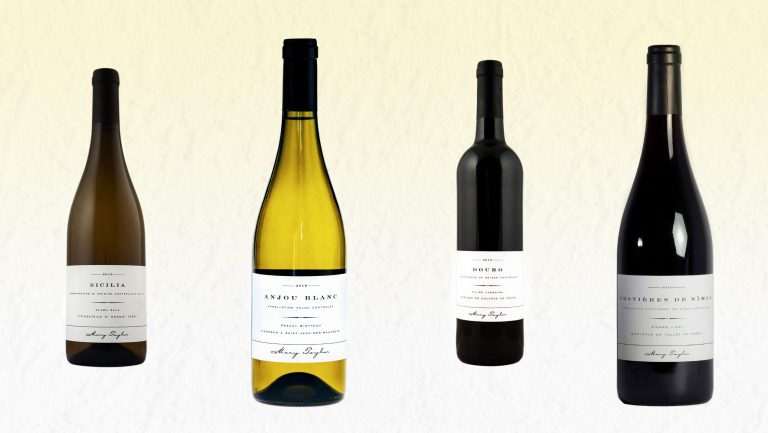
How did you come up with the concept and design for your White Label series?
A lot of daydreaming out of Greyhound buses and TGV windows, thinking about what would help U.S. wine consumers feel more confident about foreign wines with many unfamiliar words and languages. My label was inspired by a strip label from a tank sample. My friend Emily Mahon, who is a wicked talent in graphic design and fonts for book covers, helped me design the labels and select the fonts. I didn’t plan to put my name on the front label, but there was more than one dude who moved to copy my simple package design, so I did (I don’t particularly love my name, but that was the most authentic thing I could come up with). And voila—Mary Taylor Wine was born.
How do you find and select producers to work with?
I love little, regional wine fairs such as the Percée du Vin Jaune. I meet authentic people, like artisanal farmers with a certain air of dedication and humility. I am committed to the appellation systems, for better or worse, so we don’t buy Vin de France or varietal wine, for example, but we look for geographical designations and wines that are terroir-driven.
How do you find such good quality wines at the sub-$20 retail price point?
We have built a reputation as an importer who is serious and who pays our bills on time. We can have concerted negotiations with growers about projected vintage buys in volume. That way, we can all plan. I rarely buy less than 20,000 bottles of something. There are lots of amazing and hard-working families out there who make great wine, but just haven’t cracked the code with the U.S.—we look for them.
How do buyers respond to your wines and their packaging?
It’s been immensely favorable. The end consumers love the wines. We are in a lot of independent bottle shops and great restaurants (in 44 states and five countries). They even like our stuff in the U.K. There were a lot of times, however, that people were quick to make assumptions about the project without grasping what I was doing. I heard “we don’t buy from negociants” a few times. I’m not a negociant. These are all grower wines. And in certain cases, like the places I used to be a street rep, some of the cool kids kind of rolled their eyes at me at the beginning, but that doesn’t bother me because I believe in what I’m doing—this is about inclusivity, not exclusivity.
How do you make inroads with new buyers?
We work with intentional, well-meaning distributors who know the markets. We are only really in boutique spots, but we are open to finding a path which supports our efforts, our growers, and gets the wines in people’s hands, while focusing on independent businesses.
How do you connect with U.S. consumers accustomed to shopping by grape variety?
The streamlining of the package makes it really easy for people to feel safe. It removes an element of risk that the $10 to $20 you spend will go to waste or not be maximized. People tell us they like our style (no aromatic yeast, low yields, chemical-free farming, very little or no oak on the reds). We list the grape variety on the back label. We try to communicate as best we can about the flavor of geography. I avoid the word terroir (unless I have time to explain it), and try to keep things super simple while presenting something super complicated.
What obstacles did you face as you built your business?
I showed up in New York City on September 4, 2001 with no money, no connections, and a lot of insecurity—I jumped into the belly of the beast and got creamed a million times, but kept getting back in the fight and figuring it out. Today, I have no investors, no partners, no family members involved. It’s just me and the amazing team I’ve been able to build around me. But if all fails, I have zero to fall back on. So, I have to succeed.
This interview has been edited and condensed.

Dispatch
Sign up for our award-winning newsletter
Don’t miss the latest drinks industry news and insights—delivered to your inbox every week.
Caitlin A. Miller is a New York-based wine writer and the current associate editor for SevenFifty Daily. Her work has appeared in Food & Wine, Vinous, and Christie’s International Real Estate Magazine. She holds the WSET Diploma in Wines and was the recipient of the 2020 Vinous Young Wine Writer Fellowship.

